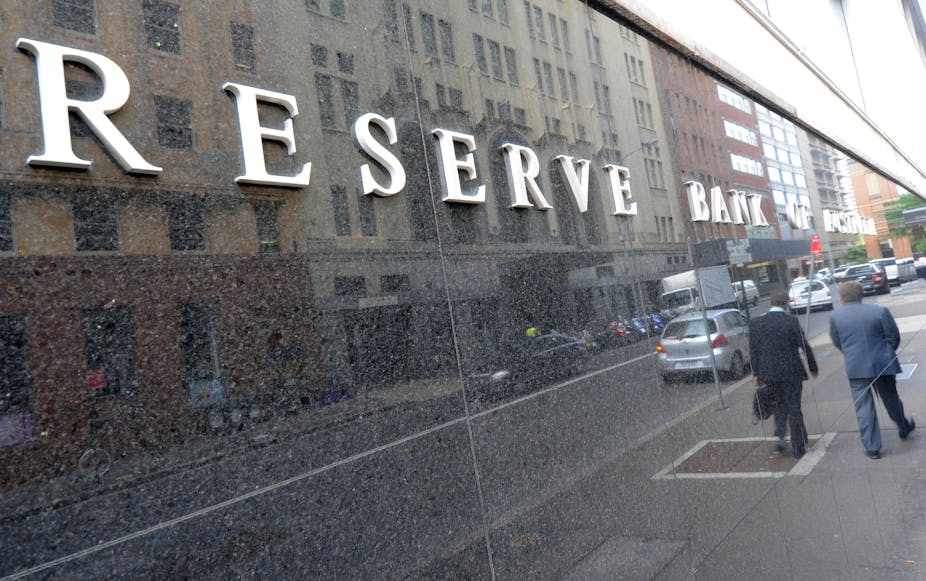The Reserve Bank of Australia has cut the official cash interest rate by 25 basis points, from 4.75% to 4.5%, in a move matching most economists’ expectations.
It was the first cut since April 2009.
Westpac and the Commonwealth Bank announced shortly after the RBA’s decision that they would pass on the cut to their standard variable rate loan holders.
RBA Governor Glenn Stevens said in a statement that declining demand and the strong Australian dollar had contained inflation in the first half of the year.
“With labour market conditions now softer, the likelihood of a significant acceleration in labour costs outside the resources and related sectors in the near term has lessened … accordingly, the bank’s current judgement is that inflation is likely to be consistent with the 2%–3% per cent target in 2012 and 2013.”
University of Western Sydney Economics Professor Steve Keen and Adrian Pagan, a University of Sydney Economics Professor and former RBA board member, explain the reasons behind this month’s decision and assess the likelihood of more cuts to come.
Steve Keen, Professor of Economics, University of Western Sydney
There are a few reasons for this cut. The RBA’s models previously told them that we could expect to see rising inflation and falling unemployment, so that’s why they expected they would need to continue keeping rates up.
Now what has happened is that inflation is falling. The recent revision of the Australian Bureau of Statistics (ABS) figures drastically reduced the recorded level of inflation.
This should be a surprise to the RBA, because their models would say that with the level of capital utilisation right now we should have rising inflation.
We’re also seeing unemployment rising, which again goes against their expectations.
If it hadn’t been for the redefinition of the consumer price index that led to the ABS revisions, the RBA would have held the line this time around.
This is because it generally tends to respond too slowly when it needs to move in the opposite direction. The RBA probably would have held off to see what this Thursday’s unemployment figures showed.
But with the CPI revision, the RBA board has a reason that appears consistent with its philosophy about how inflation is caused.

They can adjust the rate and attribute it to a flaw in the data, which led to the ABS revision. But I think that the inflation figure has come as a surprise to them.
The only economic models that the RBA use are neoclassical, so by definition they have deficiencies in their modelling.
They’re about as relevant to the Australian economy or global economy as the weather conditions on Mars are to those on Earth.
The RBA is still expecting a booming economy, when in fact what we are experiencing is a debt deflation.
I’ve had personal experience in talking with deputy RBA governors on this – they do not see the importance of the ratio of private debt to gross domestic product.
Yet that is what is driving the entire global economy at the moment, because you have unprecedented levels of private debt that were accumulated during asset bubbles, which banks studiously ignored.
When those asset bubbles reached their peaks and burst, then the debt levels came down as well. That reduction in debt is what drove the global financial crisis.
The RBA continues to ignore the role of private debt in aggregate demand and economic performance in general.
So they will continue to be wrong about this for a substantial amount of time. They have cut rates this time around not because they are pro-active, but because they are reactive to their own flawed modelling.
We can expects more cuts to come.
Adrian Pagan, Professor of Economics, The University of Sydney
Inflation looks reasonably under control, and it has looked like that for some time.
I think the outlook for growth is pretty good. It’s not spectacular, but you wouldn’t be cutting rates because of that. And I don’t think you should be cutting rates because of an inflation outcome – it’s just one number.
You might argue that they have put rates at the level they’ve been because they thought inflation was going to be stronger, so they’re just reversing a little bit.
Then they’ll be in a position to raise them again if they have to later on.
I can’t see the reason why you would cut interest rates by 25 basis points – I don’t believe in 25 point cuts. I think that’s a silly situation we got into with making such small adjustments. Monetary policy should be conducted with bigger adjustments, although 25 basis-point moves came in when I was on the Board, back in 2000.
There have been bigger changes, but they’ve tended to go towards a sequence of 25 point changes. They build up. You never see one of them – you see a sequence of them. I just don’t favour that strategy.
As far as I can see the outlook here hasn’t changed much at all over the last couple of months, really.
And I don’t think the international situation is as bad as everyone thinks it is, but 25 basis points is not a response to that. If you really thought it was bad, you wouldn’t be doing 25, you’d be doing 50 or 75.
Predicting negative outcomes for the international situation is a mug’s game. I don’t think anything much has changed. Mostly people are getting excited about Greek debt, and so on, but even if investors take 50% hair cuts it’s not going to go away. Fundamentally I don’t see that Greece can stay in the Eurozone.
I don’t think it’s going to have a major effect on economic activity, certainly not in Australia anyway.
It could make a slowdown [in Europe], a bit of negative growth, but Europe never grows much anyway so it doesn’t take much to make it edge towards negative growth.

